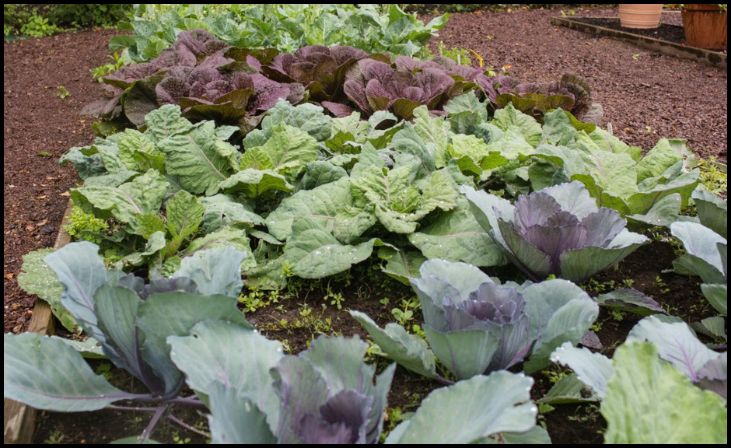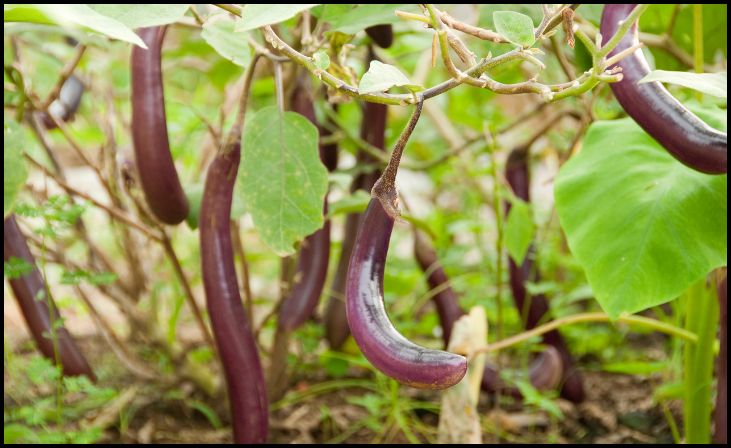Companion planting is a gardening technique where different plants are grown together to benefit each other. This method can enhance growth, repel pests, and improve the overall health of your garden. However, not all plants are good companions. When it comes to tomatoes, certain plants can hinder their growth, attract harmful pests, or even cause diseases. In this blog, we’ll explore seven companion plants you should never grow with tomatoes to ensure your garden thrives.
1. Brassicas (Cabbage, Broccoli, Cauliflower, and Kale)

Brassicas, which include cabbage, broccoli, cauliflower, and kale, are generally poor companions for tomatoes. These plants can stunt the growth of tomatoes and compete for the same nutrients in the soil. Brassicas have extensive root systems that can interfere with the shallow roots of tomato plants, leading to reduced water and nutrient uptake for both plants.
Why They Don’t Mix
- Nutrient Competition: Brassicas are heavy feeders and require similar nutrients as tomatoes, such as nitrogen, phosphorus, and potassium. This competition can lead to nutrient deficiencies and weaker plants.
- Space Competition: The large foliage of brassicas can overshadow tomato plants, reducing their access to sunlight, which is crucial for photosynthesis and fruit production.
Alternatives
Instead of planting brassicas near tomatoes, consider growing leafy greens like lettuce or spinach, which have different nutrient needs and won’t compete as aggressively.
2. Corn

Corn and tomatoes are a bad combination due to their susceptibility to similar pests and diseases. One of the main concerns is the corn earworm, which also affects tomatoes as the tomato fruitworm. Additionally, both plants are heavy feeders, leading to nutrient competition.
Why They Don’t Mix
- Pest Attraction: Both corn and tomatoes are susceptible to the corn earworm and other pests like the armyworm. Planting them together can create a larger target for these pests, leading to increased infestations.
- Nutrient Competition: Corn requires a lot of nitrogen, and so do tomatoes. Growing them together can deplete the soil of this essential nutrient, affecting the growth and productivity of both plants.
Alternatives
Consider planting corn with beans or squash, which can create a beneficial three-sisters planting combination. Tomatoes, on the other hand, do well with companions like basil and marigold, which can repel pests.
3. Potatoes

Potatoes and tomatoes are both members of the nightshade family, which means they share similar diseases and pests. Planting them together can increase the risk of spreading diseases like blight and attracting pests such as aphids and the Colorado potato beetle.
Why They Don’t Mix
- Disease Transmission: Blight, a fungal disease, can easily spread between tomatoes and potatoes, devastating both crops. Early and late blight can overwinter in the soil and infect both plants, leading to significant yield loss.
- Pest Attraction: Both crops attract similar pests. The Colorado potato beetle, for example, can damage both tomato and potato plants, leading to stunted growth and poor yields.
Alternatives
Instead of planting potatoes near tomatoes, try growing them with crops like beans or corn, which are less susceptible to blight and other common pests.
4. Fennel

Fennel is known to inhibit the growth of many plants, including tomatoes. This allelopathic plant releases chemicals from its roots that can hinder the growth of neighboring plants, including tomatoes.
Why They Don’t Mix
- Allelopathy: Fennel secretes substances that can stunt the growth of nearby plants, including tomatoes. These chemicals can disrupt the root development of tomato plants, leading to poor growth and reduced yields.
- Space Competition: Fennel can grow quite tall and dense, casting shade on tomato plants and reducing their access to sunlight.
Alternatives
Instead of fennel, consider planting herbs like basil or oregano near your tomatoes. These herbs can enhance the flavor of tomatoes and help repel pests without inhibiting their growth.
5. Eggplant

Eggplant, like potatoes, is a member of the nightshade family and shares similar diseases and pests with tomatoes. Growing them together can increase the risk of transmitting diseases like verticillium wilt and attracting pests like aphids and spider mites.
Why They Don’t Mix
- Disease Transmission: Verticillium wilt and other soil-borne diseases can easily spread between eggplants and tomatoes, leading to wilted, yellowing plants and reduced yields.
- Pest Attraction: Both eggplant and tomatoes attract pests like aphids, spider mites, and the tomato hornworm. Growing them together can create a larger breeding ground for these pests.
Alternatives
Instead of eggplants, consider planting companions like carrots or onions near tomatoes. These plants have different nutrient needs and can help repel common tomato pests.
6. Dill

While young dill can be beneficial to tomatoes by attracting beneficial insects like pollinators and predatory insects that feed on pests, mature dill can have the opposite effect. Mature dill plants can inhibit the growth of tomato plants and should be planted away from tomatoes.
Why They Don’t Mix
- Growth Inhibition: Mature dill plants can release chemicals that stunt the growth of tomatoes. These chemicals can interfere with the development of tomato roots and reduce overall plant vigor.
- Space Competition: Dill can grow tall and bushy, overshadowing tomato plants and reducing their access to sunlight, which is crucial for healthy growth and fruit production.
Alternatives
Consider growing dill in a separate part of the garden or with crops like lettuce and cabbage, where its benefits outweigh its potential negative effects on tomatoes.
7. Walnuts

Walnut trees produce a chemical called juglone, which is toxic to many plants, including tomatoes. This allelopathic substance is released from the roots, leaves, and nuts of the walnut tree, inhibiting the growth of nearby plants.
Why They Don’t Mix
- Juglone Toxicity: Juglone can cause tomatoes to wilt, yellow, and eventually die. The chemical is present in the roots, leaves, and nuts of the walnut tree, making it difficult to grow tomatoes in the vicinity.
- Root Competition: Walnut trees have extensive root systems that can compete with tomato plants for water and nutrients, further stressing the tomatoes.
Alternatives
Instead of planting tomatoes near walnut trees, consider growing juglone-tolerant plants like beans, corn, or squash. These plants can thrive in the presence of juglone and will not suffer from the same toxic effects.
Conclusion
Understanding companion planting is crucial for creating a thriving garden. While some plants can enhance the growth and health of your tomatoes, others can have detrimental effects. Avoid planting brassicas, corn, potatoes, fennel, eggplant, dill, and walnuts near your tomatoes to prevent competition for nutrients, disease transmission, and growth inhibition. Instead, choose companion plants that complement tomatoes, such as basil, marigolds, and carrots, to create a harmonious and productive garden. By carefully selecting the right plant combinations, you can ensure a bountiful harvest and a healthier garden ecosystem.
4o




